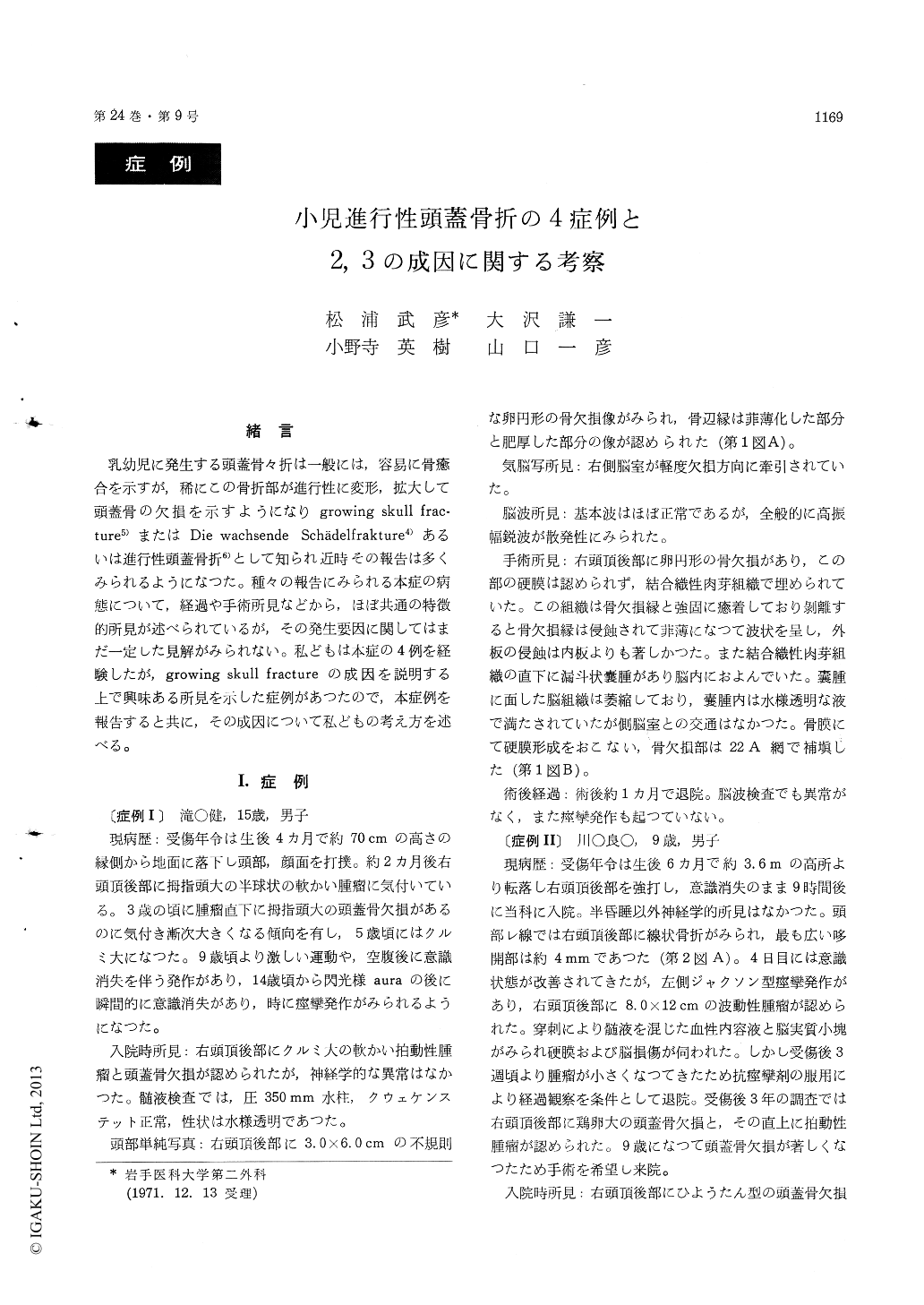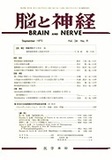Japanese
English
- 有料閲覧
- Abstract 文献概要
- 1ページ目 Look Inside
緒言
乳幼児に発生する頭蓋骨々折は一般には,容易に骨癒合を示すが,稀にこの骨折部が進行性に変形,拡大して頭蓋骨の欠損を示すようになりgrowing skull frac—ture5)またはDie wachsende Schadelfrakture4)あるいは進行性頭蓋骨折6)として知られ近時その報告は多くみられるようになつた。種々の報告にみられる本症の病態について,経過や手術所見などから,ほぼ共通の特徴的所見が述べられているが,その発生要因に関してはまだ一定した見解がみられない。私どもは本症の4例を経験したが,growing skull fractureの成因を説明する上で興味ある所見を示した症例があつたので,本症例を報告すると共に,その成因について私どもの考え方を述べる。
Skull fracture occurrs in the young children has been known as growing skull fracture, and a number of reports have been available on it. There are found in those reports some common characteristics of the disease but no theory has been established concerning the pathogenesis of it. We have ex-perienced four cases (Case I, II, III and IV) of the disease. In this paper, we have reported some in-teresting findings shown among them and our view on the pathogenesis of the disease.
Cases I and II had trauma at the age of 4 months and 6 months respectively and Cases III and IV at the age of 5 years and 4 years respectively. Causes of trauma of them all were fall. Conscious disturbance lasted for three to ten days. Neuro-logical deficit was not recognized in Case I and II, but in Case III and IV were found paresis and disturbance of visual field. As for cerebrospinal fluid pressure, Cases I, II and III were of cerebro-spinal hypertension with 270-350 mmH2O. Case IV maintained normal pressure. Contusion was in the parietal or the parieto-occipital in all cases. Skull defect of Case I and II, which were of infant, was larger than Case III and IV, of young child.
Posttraumatic duration until tumor formation was four days in Case II and two months in Cases I and III but no tumor was formed in Case IV. Post-traumatic epilepsy, however, occurred in all cases, for which administration of anticonvulsive was done. Any epileptic discharge was discernible on the later EEG.
In our four cases, funnel-shaped intracerebral cyst with the cerebral surface being at the bottom was formed. Two of those cysts extended into the ventricle. The process of this cystic formation is that a leptomeningeal cyst formed in the fracture or dural tear as it grows in a torn part of the pia water or the cerebral surface gradually extends into the intracerebral with a wedge effect, until at last becomes a funnel-shaped cyst. Therefore contusion of the cerebral surface was assumed to be the cause of this multiple cyst. The enlargement of skull defect was largely due to an erosive action of the connective granulation tissue, as well as the existance of dura, as was seen in Case IV.
Since most of this skull fracture occurred in in-fants, it is likely that a growing ability of the skull helps enlarge the skull defect or form other deformities.

Copyright © 1972, Igaku-Shoin Ltd. All rights reserved.


